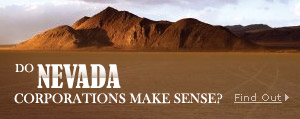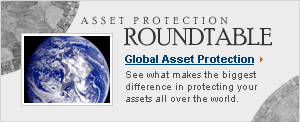Panama Canal Zone
The residents of the Panama Canal Zone�joke that this city of
high-rise condos and ocean promenades is just�like Miami or
Los Angeles,�except that more English is spoken here.
Four years�after�U.S. troops left and Panamanians regained control
of the canal, their most important national asset, the "Yankee"�legacy
here remains deep and surprisingly welcome.
Even more surprising is, though anti-Americanism�has risen sharply�throughout
Latin America,�Panamanians willingly retain�the values and symbols
of their former occupiers, which range from language to music
and fashion.�The one thing that is valued most of all�is the almighty
U.S. dollar.
Tomas Cabal, a well-known TV commentator, recently stated, "The
motto here today is 'Gringo come back.' "Panamanians would like
to see American troops�come back and build a base on the Colombian
border."
For nearly twelve years, Panama has been without an army of
its own. When the U.S. armed forces invaded Panama in 1989,
ousting General Noriego, the Panama Defense Forces were disbanded
three years�later.�� But,�by and large, most Panamanians are
very grateful for the forced regime change.
"George Bush is a great leader! He got rid of the "Pineapple"
(the nickname given�Noriega), and he has gotten rid of Saddam
Hussein,"�said a�citizen..
The U.S. military action in Iraq is has caused a lot of political
tension between Washington and�a number of�Latin American countries,
from the staunch allies�of Mexico and Chile, to our traditional
adversary, Cuba.� However, the Panamanians have kept their eyes
on the bottom line more than the front lines.� The country's
best and brightest benefited from generous scholarship programs
that have�sent thousands of Panamanians to U.S. universities.
Today, most of�Panama's business and political leaders have�picked
up American�customs as well as degrees.
A love-hate relationship existed for decades between the U.S.
and Panama started shortly after the canal opened in 1914, with
Panamanians resentful of U.S. control of the waterway and the
12-mile-wide Canal Zone�fencing off the Zone from the rest of
their country.� But, on the other hand, the U.S.-built�canal
lifted the country from being a �"banana republic" to a global
trading and maritime player.� When the canal was�returned to
Panama on Dec. 31, 1999, the only real thorn in the relationship
finally fell away.
Much of these�good feelings are the result of the high levels
of intermarriage and dual citizenship during the U.S. occupation
of the Canal Zone.�Over 10,000 U.S. troops and civilian contractors
lived in the zone until the waterway was returned to Panama,
and even children that were born to two U.S. citizens have�retained
the right to Panamanian citizenship after the�U.S. withdrawal.
Hundreds of "Zonians" have�remained in Panama, thereby�strengthening
the bonds between the two nations.
"I'm a Panamanian as much as an American. I was born here and
spent my whole life here," said Lori Gibson, a 47-year-old
artist whose parents were U.S. canal workers.� She married
another "Zonian", and �she keeps a foot in both countries
by visiting family members in the U.S. while working in Panama with indigenous groups�in preserving their culture and marketing
their crafts.
Because of the thousands of dual citizens, official statistics
that�show nearly 10% of the population consists of foreigners
probably fails to�reflect the proportion of Americans in this
cosmopolitan country.� Panama�is also home to tens of thousands
of people from Asia, Europe and�other Latin America countries.
What keeps the U.S.and Panama bound together is economics. The
U.S. is the largest user of the canal, is the Republic of Panama's most important trade partner and is also the de facto central
banker and monetary-policy controller.
"Why is our currency the U.S. dollar? Because we were visionaries,"
said Romel Adames, vice minister for commerce and industry.�Senor�Adames
also noted that using the�U.S. dollar�saves Panama the�need
to maintain a national mint and shields the economy from inflation
and manipulation of the money supply. "There's no sovereignty
issue here," Adames insisted.
There is also the�strong new presence of U.S. retirees, who
have been drawn to Panama by its low taxes, affordable housing,
tropical climate and contemporary, bilingual entertainment.
"There's a lot of shared history here, a lot of cultural affinity.
The long U.S. presence here affects the way people do business,
the way things are viewed," said retired Air Force Ccolonel David
Hunt.
Though he does detect among Panamanian movers and shakers an�increase
in self-confidence and pride at finally achieving full control
over their national affairs, Hunt said he has seen none of the
resentment that U.S. citizens encounter everywhere else south
of the border.
"It's all very subtle and very polite," he said. "There's a
self-awareness in the post-U.S. age that I think is a good and
natural evolution."

ABOUT THE COMPANY
- About Our Firm
- Trustmakers Sitemap
- Mission Statement
- Panama Comfort Zone
- Asset Protection Newsletters
- Asset Protection Trust
- Family Trust
- Virtual Tour
- Asset Protection Privacy
- Contact Us
- Contributors
- FAQs
- Home Equity Acceleration Plan
- Author News
- Asset Protection Misconceptions
- Asset Protection News
- Asset Protection Trust.02 12 13
- Dynasty Trust The Basics
- Resources
- Asset Protection Affliates
- Asset Protection Facts
- Asset Protection Calm
- Home Protection
- OVERVIEW
- Privacy Policy
- Author Newsletter
- Newsletter
- Asset Protection Trust Services
- Asset Protection Strategy
- Offshore Investing
- Disclaimer
- Rob Lambert
- PANAMA CANAL ZONE
- Asset Protection Consultation
- TrustMakers Forms Center
- TrustMakers Site Map

EDUCATION PRODUCTS

Asset Protecion Training
If you are looking for the most important concepts in Asset Protection, this is where to start! If you need to talk intelligently about protecting your net worth or you are a professional this online training program is for you!

Free Asset Protecion Course
Get our Free Online Asset Protection Video Course.
Learn how to protect yourself like the pros!


Asset Protection in a Nutshell
Clear, concise and straight forward, this e-Book will help you make sound decisions with your business and personal assets..

Protecting Assets - 70+ Video Lessons + 3 Ebooks
This e-course will give you straight forward asset protection advice you can implement now. One of the best asset protection courses available! Includes 70+ video lessons, 3 Ebooks, and 6 example legal documents!

Advanced Estate Planner
The key to a solid Asset Protection Plan is the Estate Plan. This downloadable estate organizer will help you keep track of important information about your assets and important legal documents all in one place.
















